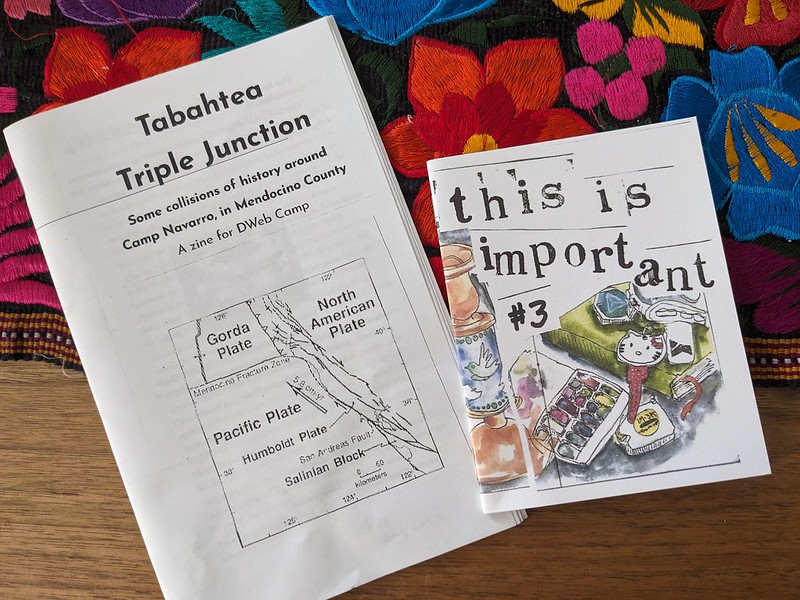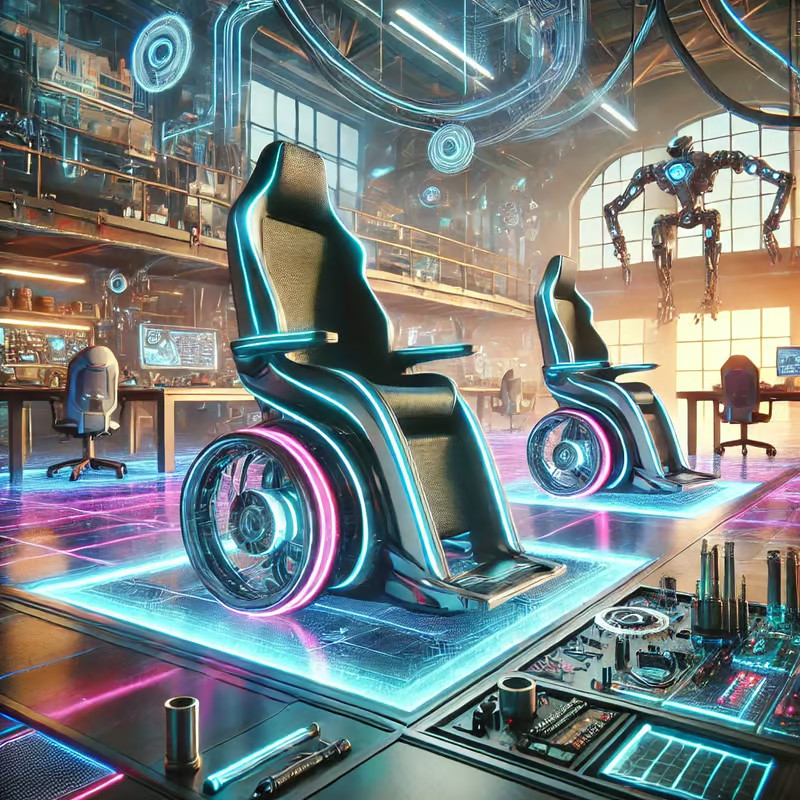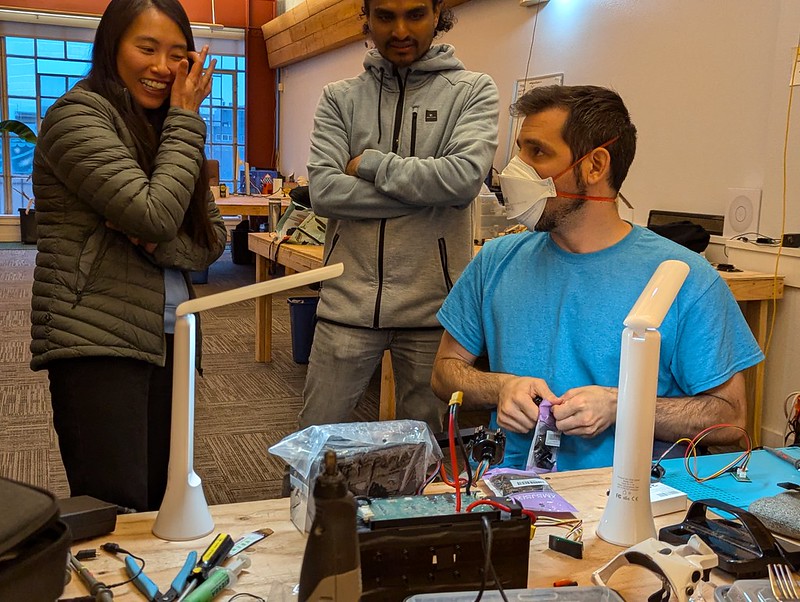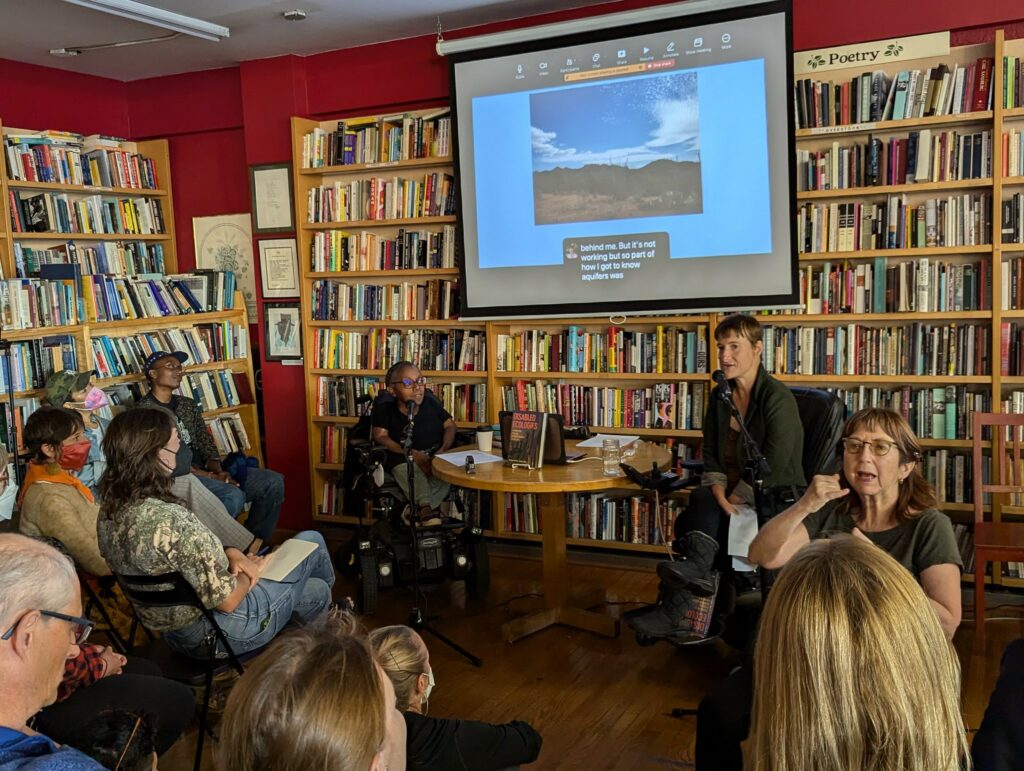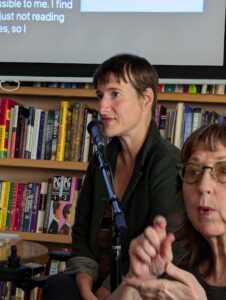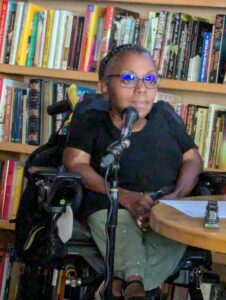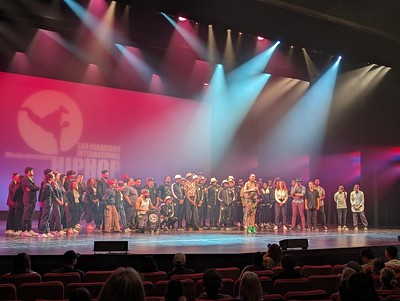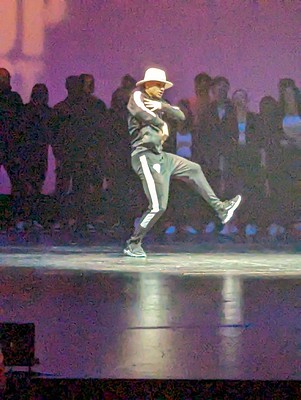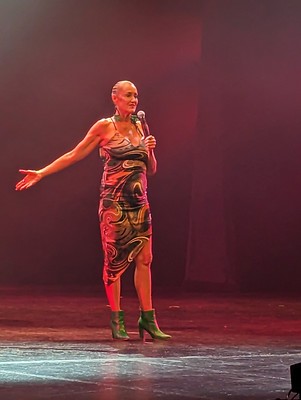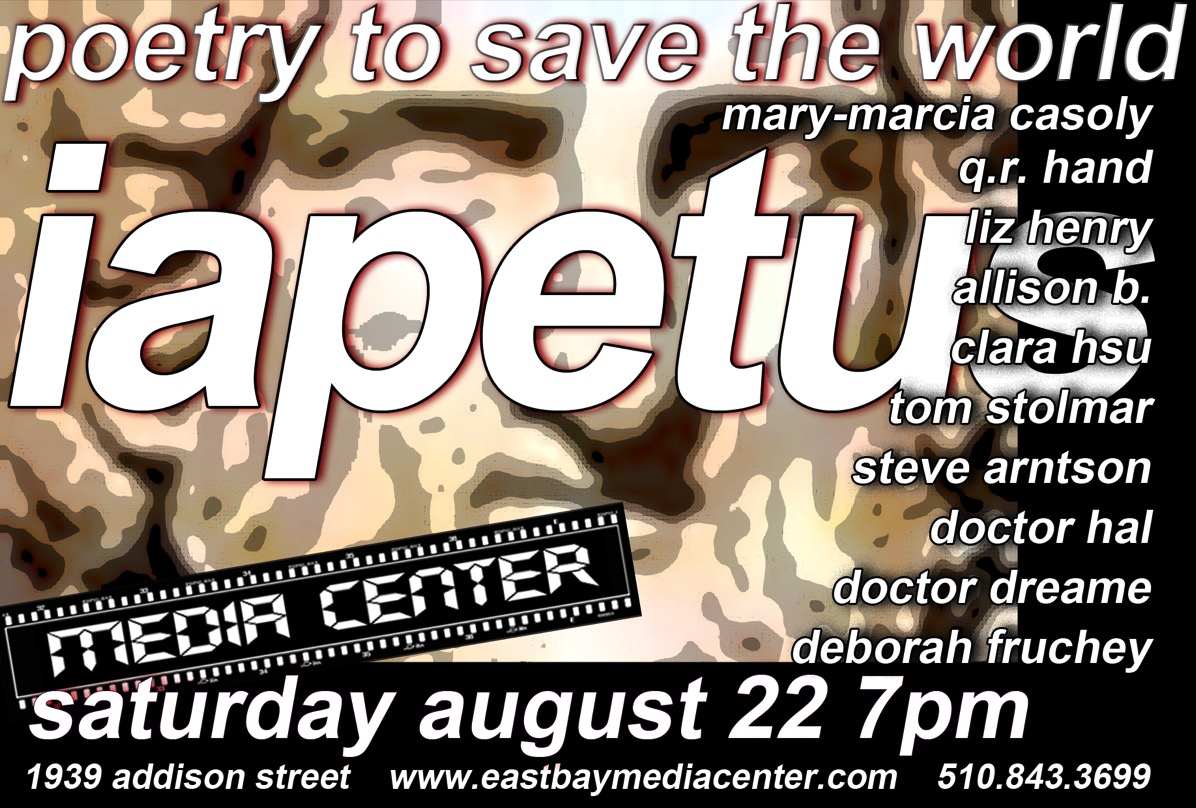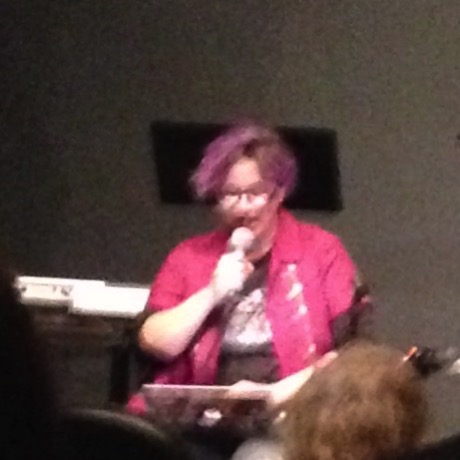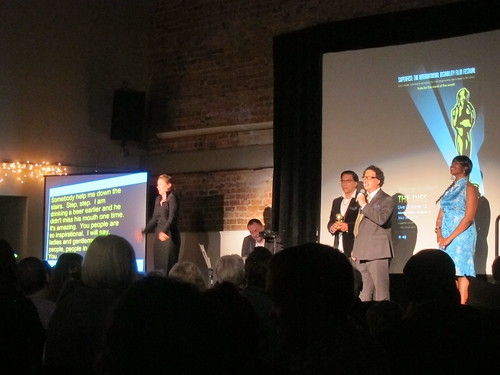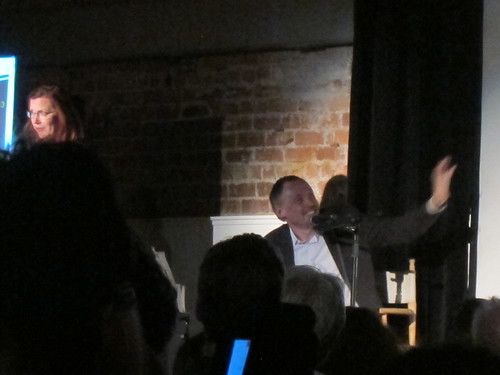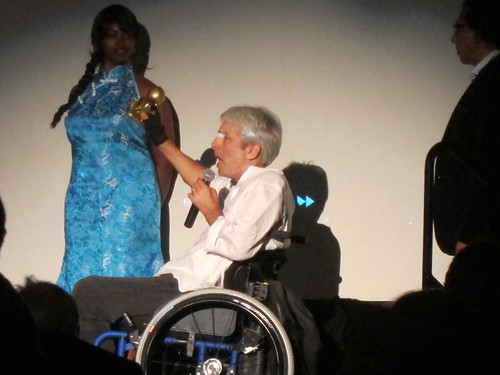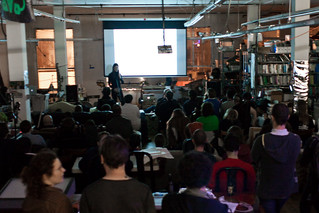Sketchfest & Stamptown
I went out last night to see Stamptown with Danny b/c he has become a huge fan of Zach Zucker. Aside from a few moments when he made me watch tiktok videos of Zucker and thinking “Oh yeah the guy with the sound effects, pretty funny” I was not super familiar with him. But wow the show blew me away! The videos don’t convey the physicality of what was going on!! I love art of any kind that is very dense and complicated where you can’t even see, notice, or absorb it all at once. That is what I usually go for in my poetry and it’s what I like most in books. Stamptown was LIKE THAT. Super dense, fast, layered, complicated. A whole scene of people riffing off each others’ styles.
Because of Danny having some history in comedy and performance I have had a sort of side course in at least British comedy from the sorts that monty python was reacting to and then the people reacting against or just differentiating from python style stuff and then Danny’s friends (Stewart Lee and that generation in general). So I was also extrapolating the “scene” I guess of whatever the Stamptown crew was doing and noticing how they were performing not just for the audience but for each other (which is always great b/c it means whatever is happening is complicated or sophisticated on some level – they are working to impress other comedians!) and trying to think of them in a bigger context of even more comedians who weren’t there and who I don’t know about who may be creating or riding some sort of stylistic wave.
I also loved that it was “clown” style comedy or physical comedy I guess. There was something about all the performers doing things that were purely joyous or sharing joy in absurdity or whatever it was they were doing – Rather than some comedy which is more about showing off you are supposedly clever, or, about being cruel, I think. Before the show, Danny talked a bit about clowns and I had no idea what he meant and felt somewhat repulsed or suspicious – like, to me, “clowns” were just like a somewhat annoying cliche, or a creepy horror thing. But during the show I realized some of what he meant and thought more about rodeo clowns (who are doing something functional to distract a bull’s attention from the thrown rider, but who are also amazing and exuberant in that way of sharing a kind of joyousness in the absurd — by the way I love rodeos a lot) The performers aren’t necessarily doing something complicated at first, but the complexity can build up quite a lot!
And it was also so fabulously queer <3 <3 <3 So from last night the show opened or "before" the show Zach Zucker (or his persona?) was dancing on stage and a tall skinny guy in purple velour stretch pants and a hippie headband was rollerskating around the theater aisles wearing a tshirt that said "DYLAN ®“. His roller skating got more and more chaotic and flamboyant – including throwing himself to the ground & shoulder-rolling onto the stage – A giant hoop came down from the ceiling and it became an aerial act – Two dudes in full (face-covering) body stockings (one with a DYLAN® shirt) came out to prance around – An umbrella full of confetti- Absolute fucking chaos – More & more absurd somehow – One of the body stocking guys “accidentally” shooting himself in the dick with a confetti gun – It’s very hard to describe how this unfolded but as the rest of the show went on all these characters would reappear — often the body stocking duo would be “shot” and fall over by one of Jack Tucker’s sound effects and the stage crew would have to drag them off – Dylan® would come on to mourn them or take photos or just roller skate around.
There was also sometimes an excitingly dangerous edge to Dylan® and his crew as they were so fast and furious & skating, running, or doing flips in the aisle or from/onto the stage, that it was like being in the middle of a martial arts battle.

I liked his “earnest” punchlines about how he could finally be himself and free.
Am I going to list everything from the show! OMG?! I don’t think I can. Jack Tucker flailing the mic around and the mic stand (same dangerous excitement as above) and pulling an apple out of nowhere (to the tune of New York New York and whacking it with the mic like a baseball so that the stage was spattered with smashed bits of apple. Enter the metalhead guitarist in spangles – I can’t remember who ripped his outfit off but underneath he had on hot pants and a little harness – The Lumberjack viking looking guy who would come out to particular theme music (whenever someone would ask for a cleaning crew to clean the stage) Pull a hammer out of his shorts, hold up a beer can, whack it with the hammer and chug it (though most of the time it just ran down his beard onto the floor) I could analyze each of their acts! But my point is the chaos and the mess on stage kept increasing!
At some point about 10 minutes into this I got out my phone and bought myself two tickets to the Saturday Zach Zucker show even though Danny was going to miss it I realized I had to see it. He looked over at me in horror – was I hating the show so much I was scrolling on my phone? NO…. i loved it so much I bought tickets for more.
I also note that I enjoyed Jack Tucker’s outfit and the feeling I had from it that he might pull ANYTHING from his pockets or out of his pants like the Doctor in Doctor Who or a looney tunes character – and that he didn’t actually use all the things that WERE in there –
The performers were sort of training us “the audience” to react in certain ways with clicker training (literally) and musical cues (LITTLE CABLE CARRRRRRRRS…… playing each time something even hinted at mentioning San Francisco or the Bay Area) and sound effects –
I loved the aerialists Clown & Drummer – her teetering and slipping on her lucite heels – him in silver body suit & perpetual look of abject terror, wheeled out on a hand truck) – they were very funny in a complicated way!!, Camden Garcia, the Two Adults in a Trenchcoat who I think were Demi Adejuyigbe and another guy (guys?) (BriTANick?), stage manager Erin, and really everyone but I think I am now a die hard fan of Ike Ufomadu. Holy shit! He slayed me!!! He came out walking very slowly – a little exchange of significant head nods and points back and forth with Jack Tucker – but then they KEPT DOING IT – very “slowly I turned, step by step” feel to it – crossing the stage to the mic at a snail’s pace with a transcendent grin – a little bewildered – then another fucking instance of the “point”. The repetition was amazing – it went way too far and then kept going – Absolutely perfect. And they were clearly riffing or improvising. I mean who knows what they practice or have done in past shows but I thought they were egging each other on, daring each other to keep it going and making each other laugh.
Then at the mic Ike was just slowly – excruciatingly slow – exhibiting every possible mannerism that people do at a mic – adjusting it – fiddling – moving his glasses – touching his face – I dunno how to describe this. I had FLASHBACKS to every poetry / literary open mic ever and also to various professors and their mannerisms. He was doing sort of a ballet of amazing facial expressions too at a snail’s pace which made it FUNNIER. How to describe how a progression of things would happen with his face – that had me howling! It was like waacking or actually I think turfing, if you see people doing the turfing style of hip hop often they are doing some kind of ordinary like moving to get up from a chair but they do it in a slightly stylized, graceful, slow way with repetition built in.
Anyway, Ike Ufomadu was doing this with the micro expressions of his face and with all his gestures of being a person who was MAYBE ABOUT TO SAY SOMETHING INTO THE MIC and do some comedy. Before he even got there, he encountered the “Caution – wet floor” yellow sandwich board sign on the floor and had to point at the CAUTION bit of it slowly underlining it and looking around significantly at us all – then the WET FLOOR bit of the sign – building the whole thing up and gazing around the fucked up, beer-covered stage, or beer mixed with layers of confetti and smushed apple – Then FINALLY getting to the little symbol in the center of the sign of a guy slipping and falling on the CAUTION WET FLOOR and waggling his eyebrows with deep meaning – showing it slowly around to everyone in the audience!
Oh, my god, I will never see one of those Caution wet floor signs again in my life without laughing!
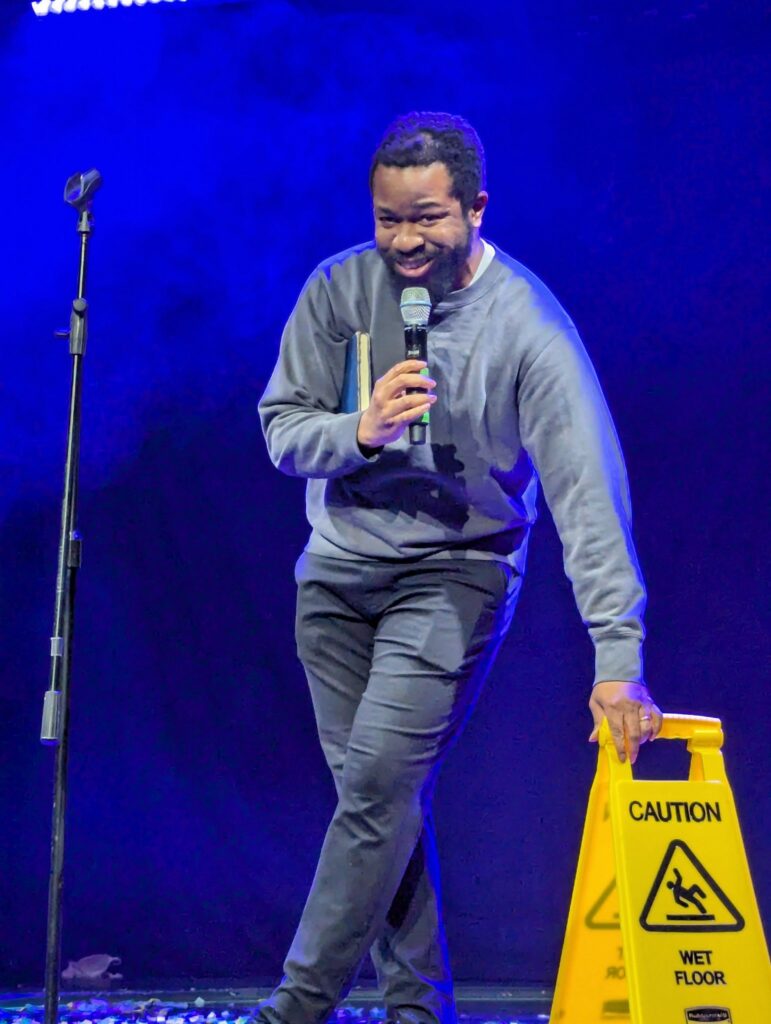
It was during this shtick that one of the cameramen who was right behind me actually screamed with laughter and lost his entire cool. He doubled over – he actually fell to his knees – I had to take a photo of him on the floor as he ended up nearly in fetal position.
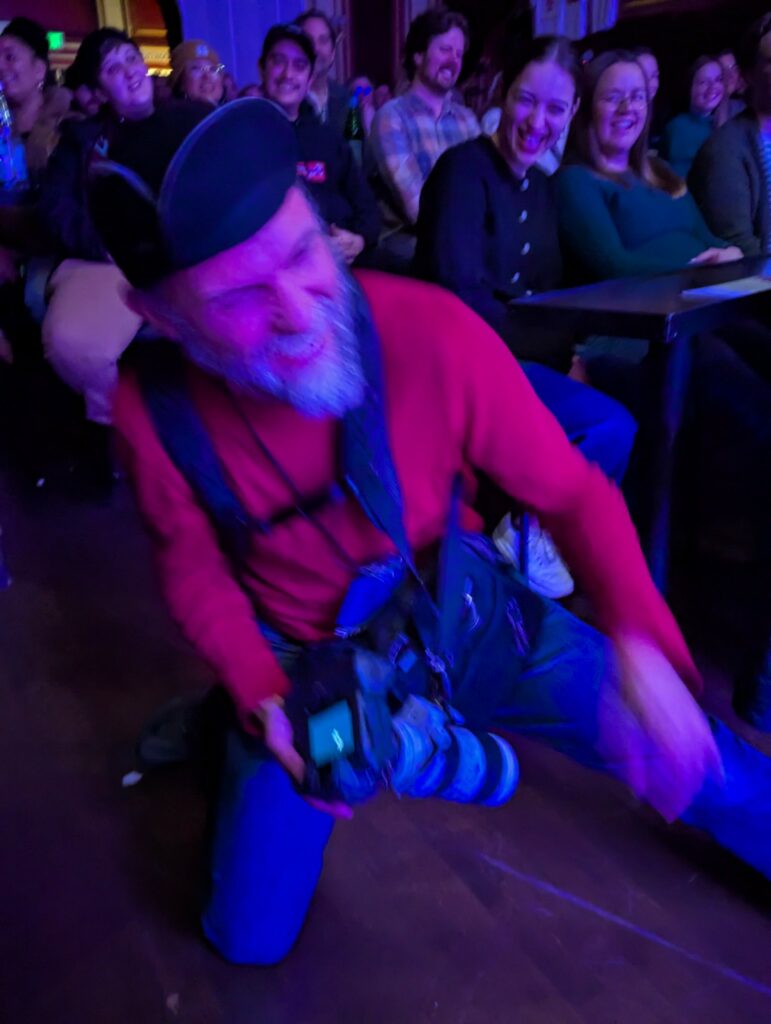
I think entire planetary systems were born and died in the interval before Ike actually said something and all the while behind him just at the edge of backstage Jack Tucker was losing his shit laughing. (Then what he ended up doing was a full blown performance of the horrible cable cars song – ahahaha – which I REALLY didn’t think was planned. Like he must have had a whole act ready but he just did this instead ! )
You know when sometimes you are looking at someone and they are looking at you and it seems so odd that reality is real and you are looking at each other, that you burst out laughing?
What I got from this was how much what he (and Zach Zucker and many of the others) were working with the, uh sort of the meta commentary on what happens in a “performance” or any situation where there is someone “performing” and an “audience” and I have to put all that in quotes because the very idea of that is of course absurd! (Like “author” or any such concept where we don’t have to accept a hierarchical power relationship at all and yet people do!) So, getting to that level of existential commentary where you realize that the nature of what you are doing and of all human interaction and everything we are doing and basically, reality, is absurd!!!! It was also done so lovingly that it wasn’t like, oh everything is absurd and that sucks and let’s all be nihilists, it was celebratory. Anyway, that’s what was going on in my brain like a sort of explosion during this performance!
Then Danny and I went around the corner utterly dazed and high with our own ideas and got a sandwich at the gyro place, during our debriefing and analysis of which bits were planned and which were more improvised, And how much we love the feeling of artists who are able to work together in such a collective way to do something – we went, HEY …. What if we just go right back around the corner and see it again at the 2nd show tonight? It would be perfect and would fit our mood from the show of free wheeling existence and flow (Dylan®: “Everything is possible!”) We nabbed the two last tickets (FATE) which were conveniently the wheelchair accessible & companion ones on the other side from where we were in the first show.
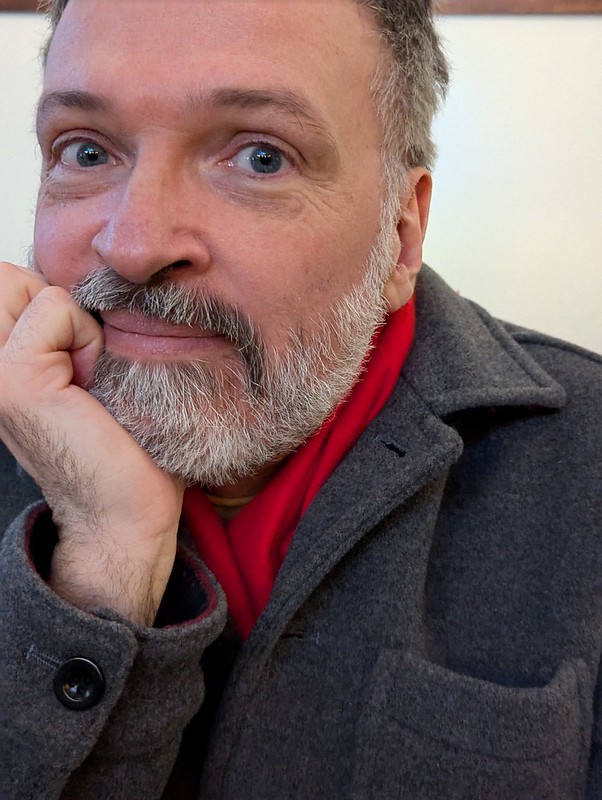
Going back into the theater felt like our own contribution to the themes of absurdity and repetition as the theater staff had to go through their hullabaloo all over again with the wheelchair lift, radioing each other that a wheelchair was incoming, trying to escort me to the seat, giving me funny mini lectures about how to be in a lift (I KNOW HOW BY NOW JFC) and trying to helpfully anticipate what I was going to do (wrongly) — and then doing it all in reverse for the 4th time for us to finally leave. I mean it is not like we can just show up unnoticed!!! So I may as well be amused by the entire thing. (navigating weird access situations is its own comedy scene that we are connoisseurs of)
The second show was different! Ike Ufomadu did a different thing this time with the book he was carrying – More on the kindly doddering but somewhat maddening professorial side (skipping the caution sign schtick) That was also amazing and made me have an entire asthma attack from laughing so hard –
I thought the 2nd crowd was a bit drunker and perhaps, well, dumber than for the first show – A different vibe – Somehow we got to a place where the entire crew had a moment of “sharing their truth” earnestly in the spotlight to sad music – then getting sloppily kissed and carried off by the beer lumberjack — till the first guy who did this (the lumberjack beer chugger) got up again and wistfully told us “when I spoke the first time I thought it was gonna be MY THING” – that one destroyed Danny utterly.
Oh, I forgot the comedy reviewer, and his crimes against comedy and against reviews! A crime I am now compounding! But, anyway, he was great.
I have not talked ENOUGH about Zach Zucker / Jack Tucker himself and what he was doing but I admired it and was super intrigued and enjoyed that seeing him do the same(ish) show a second time rewarded. I will be back tonight to see him do a whole different (??) show!
His hand sniffs were such a great running gag. (GAGGGGG) I said before that the show was exuberant rather than trying-to-be-clever, or cruel, but actually – I will see more tonight and think about it- maybe he is a bit (actually) clever, and a bit cruel, but it is not a bad kind of cruel. (Not “punching down cruel” – but more wry and insightful? I am not sure how to describe it. in any case not cliched or stupid, so, good. ) Must discuss with Danny later when I have more data.
We took a waymo robot car home which is more expensive than either the bus or my free waymo wheelchair vans, but it felt like a luxurious and futuristic thing to do that suited our mood – I think they drive safely and it is kind of relaxing – though of course I also normally enjoy late night bus rides and the glory of all humanity upon display, I am just barely coming out of a big pain/mobility flare up so getting home from our late night quickly was important!
Danny is now off on his trip to FOSDEM and Davos! Time for my disco nap so I can physically endure the long evening ahead!!!!
